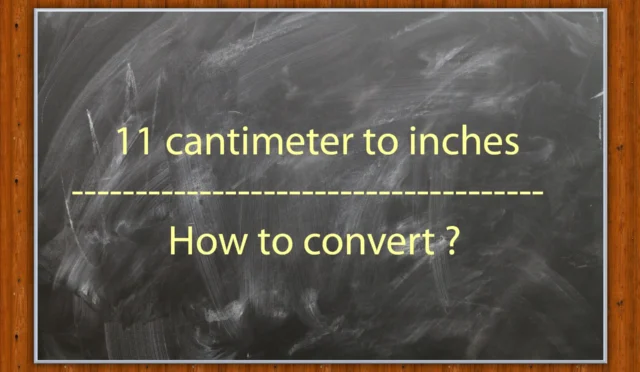Understanding 58 in cm: A Complete Guide
As the world becomes more interconnected, we are constantly exposed to different measurements and units of measure from around the globe. One such unit of measure is centimeters (cm), which is used in most parts of the world except for the United States. In this article, we will explore what 58 in cm means and how it can be converted to other units of measure.
Introduction
Measurements are essential in our everyday life, from cooking and construction to science and technology. It is crucial to understand and convert different units of measure, especially when dealing with international systems. In this article, we will discuss 58 in cm, its conversion to other units of measure, and why it is crucial to understand.
What is 58 in cm?
58 is a measurement of length in inches. An inch is a unit of length in the United States and is equivalent to 2.54 centimeters.

Therefore, 58 in cm is equivalent to 147.32 centimeters.
How to Convert 58 inches to cm to Other Units of Measure
Converting to Meters
To convert 58 in cm to meters, we divide the number of centimeters by 100, which gives us 1.4732 meters.
Converting to Feet
To convert 58 in cm to feet, we divide the number of inches by 12 to get the number of feet, which is 4.8333 feet. We then convert the remaining inches to centimeters, which is 0.8333 * 2.54, giving us 2.117 centimeters. Therefore, 58 in cm is equivalent to 4 feet 10.117 inches.
Converting to Yards
To convert 58 in cm to yards, we first convert it to feet and then divide by 3, as there are 3 feet in a yard. Therefore, 58 in cm is equivalent to 1.6111 yards.
Why Understanding 58 inches cm is Important
Understanding 58 in cm is essential when dealing with international systems, including travel, business, science, and technology. It allows you to comprehend and convert measurements accurately, avoiding costly errors and misunderstandings. Knowing how to convert measurements also provides a greater understanding of the global community and promotes cultural awareness.
Tips for Converting Measurements
Converting measurements can be challenging, but here are some tips to make it easier:
- Memorize the conversion factor between the two units of measure.
- Use a calculator or online conversion tool to avoid mistakes.
- Double-check your calculations to ensure accuracy.
- Practice converting measurements regularly to enhance proficiency.
Conclusion
Understanding and converting measurements is essential in our daily lives. In this article, we have discussed 58 in cm, its conversion to other units of measure, and the significance of understanding international systems. Knowing how to convert measurements correctly promotes global awareness, reduces misunderstandings, and enhances communication.
FAQs
- What is the conversion factor between inches and centimeters? The conversion factor between inches and centimeters is 2.54.
- Why is it important to understand 58 in cm? Understanding 58 in cm is important because it allows you to convert measurements to other units of measure accurately, promoting global awareness, reducing misunderstandings, and enhancing communication.
- What is 58 in cm in meters? 58 in cm is equivalent to 1.4732 meters.
- What is 58 in cm in feet and inches? 58 in to cm is equivalent to 4 feet 10.117 inches.
- Can I use approximate conversions instead of exact conversions? Approximate conversions can be useful for estimating distances or measurements, but they may not be accurate enough for precise calculations or scientific applications. It is generally recommended to use exact conversions whenever possible, especially for critical measurements or safety implications.
- What are some common units of measure used internationally? Some common units of measure used internationally include centimeters, meters, kilometers, miles, pounds, kilograms, and grams.
- How can I improve my ability to convert measurements? To improve your ability to convert measurements, you can practice regularly, use online conversion tools or apps, and memorize conversion factors between different units of measure.
- What are some common mistakes people make when converting measurements? Common mistakes when converting measurements include forgetting to convert units, using incorrect conversion factors, and making arithmetic errors. It is essential to double-check calculations and use a calculator or conversion tool when necessary.
- How can understanding different units of measure benefit me in my daily life? Understanding different units of measure can benefit you in your daily life by helping you accurately measure and convert ingredients for cooking, estimate distances for travel or exercise, and comprehend scientific or technical data.
- Are there any online resources available to help me convert measurements? Yes, there are many online conversion tools and apps available, including Google’s conversion tool and various conversion calculators.






